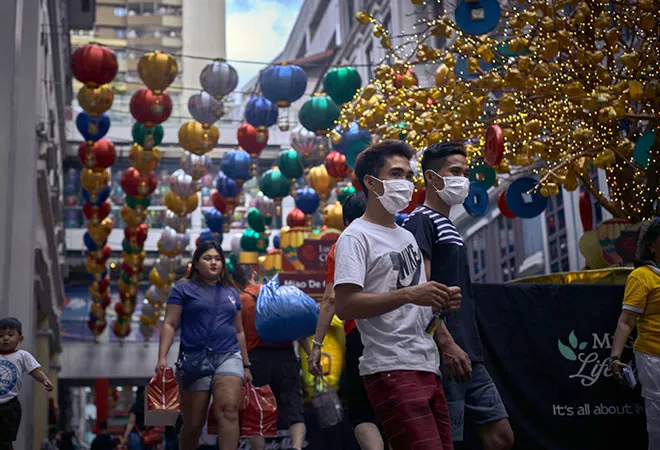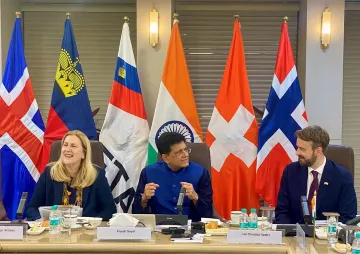
There has been a steady increase in the number of coronavirus cases in Southeast Asia, with 1,639 active cases of COVID19 reported throughout the 10 ASEAN member countries. The virus has now affected eight out of the 10 ASEAN member countries. Concerns have grown following a spike of new cases originating from a mass religious event held from 27 February to 1 March in Kuala Lumpur, Malaysia, which was attended by many people from the region, especially from neighbouring countries. The World Health Organisation (WHO) has called on “countries in the Southeast Asian region to urgently scale up aggressive measures to combat COVID19 as the number of cases continues to rise globally.”
 Source: The ASEAN Post
Source: The ASEAN Post
Before the drastic rise in cases, many Southeast Asian countries played down the threat posed by COVID19. Some officials said that prayer would keep the disease away. Others expressed optimism that the tropical heat would slow the spread of the virus. Malaysia allowed large religious gatherings. The Indonesian President, Joko Widodo, has admitted that he misled the public about the dangers of the disease caused by the coronavirus, COVID19, to prevent people from panicking. Even Terawan Agus Putranto, the Indonesian health minister, advised citizens “to relax and eschew overtime work to avoid the disease.” In the Philippines, critics have accused President Rodrigo Duterte of using the virus as cover to pursue his oft-stated ambition of imposing martial law. Myanmar’s spokesperson was reported saying, “COVID19 is still not present in Myanmar. The lifestyle and diet of Myanmar citizens are beneficial against the coronavirus.” In Cambodia, Prime Minister Hun Sen told a packed news conference that “he would kick out anyone who was wearing a surgical mask because such measures were creating an unwarranted climate of fear.” Even with the WHO declaring the epidemic, which originated in the central Chinese city of Wuhan, a global health emergency, the message did not seem to have resonated in some parts of Southeast Asia, a magnet for Chinese tourists and workers. The delay in response has led the virus to spread largely unnoticed, setting the stage for a disaster in countries where the healthcare systems are underfunded and poorly equipped. For instance, if a suspected case is found in Myanmar, the test samples will need to be sent to Thailand or Hongkong, which could take up to a week as Myanmar does not have the capacity to conduct the coronavirus test.
At the beginning of the outbreak, several of these governments downplayed the severity of the threat, publicly voicing their wariness of offending the country upon whom their economies rely. The countries, which have shown a lackadaisical approach initially to deal with the virus outbreak, have a strong Chinese influence as well as dependency on the Chinese for development and sustenance of their economy. ASEAN and China, have an annual travel flow of more than 65 million visits, and many ASEAN economies are reliant on Chinese tourist receipts. ASEAN nations collectively are also China’s second-largest trading partner. The question that can arise here: does this interdependency or the Chinese influence have a role to play in the delayed response? Given Southeast Asia’s close geographical proximity to China and the number of tourists and workers who visit the ASEAN countries, if anything — this region should have unitedly taken a stand or designed a regional response to deal with this virus outbreak at the very outset.
China is using its ‘soft power diplomacy’ to garner support from its Southeast Asian neighbours, which have received billions of dollars in Chinese investment and infrastructure in recent years as a key part of its Belt and Road Initiative (BRI). The meeting recently held in Vientiane, Laos (Special ASEAN-China Foreign Ministers’ Meeting on Coronavirus Disease ) on 20 February 2020 is reflective of this. ASEAN foreign ministers joined hands with their Chinese counterpart Wang Yi during the meeting and shouted: “Stay strong, Wuhan! Stay strong, China! Stay strong, ASEAN!” China is also looking to supply medical equipments like disposable masks, N95 masks, protective clothing, goggles, gloves, shoe covers, infrared thermometers and surgical caps to Jakarta to help the country deal with the spread of the virus. Analysts are saying Beijing was seeking expressions of support after it was taken to task for its handling of the outbreak of the new coronavirus. Alfred M. Wu, associate professor in the Lee Kuan Yew School of Public Policy at the National University of Singapore said, “China is promoting a message of friendships in ASEAN to counter the attack from the West that it has been handling the outbreak poorly.”
Currently, countries like the Philippines have imposed strong measures like barring all foreign nationals coming from China, Hong Kong and Macau. Malaysia has imposed a temporary travel ban on arrivals from all Chinese provinces that have been placed under lockdown by the Chinese government. Even as the meeting kicked off, Thailand has also issued a travel advisory urging citizens to avoid non-essential travel to China and advised those already there to leave, hinting that flights to China could be further restricted. Singapore from the very beginning has imposed an outright ban. “In ASEAN, responses seem quite divided among countries. The two that seem to have most obviously come out with a display of friendship are Cambodia and Laos,” said Tom Baxter, an independent researcher on China’s BRI. In Cambodia, which has increasingly gravitated into China’s orbit, Prime Minister Hun Sen insists he will not cut air travel, beyond suspending the six weekly flights from Wuhan. He also refuses to evacuate citizens stranded in Wuhan, as other countries have done. Malaysia became the first country in the region to announce a two-week lockdown of the country, followed by the Philippines which also moved to shutter its capital Manila and later the entire island of Luzon. Laos has sealed its borders with China and Myanmar, while people in Brunei, Singapore and Thailand have been ordered to restrict their movements.
Singapore’s approach towards tackling the virus outbreak has been the most noteworthy in this region. In Singapore, the details of where patients live, work and play are released quickly online, allowing others to protect themselves. Close contacts of patients are quarantined to limit the spread. The government further strengthened its borders this week to protect against a new wave of imported infections. It was one of the first countries to ban all travelers from mainland China, starting in late January.
The different policy decisions that ASEAN countries have made in response to the pandemic, have served to underline the discrepancy among neighbouring countries and cast doubt on the feasibility of a united regional response, despite the group already having several response mechanisms in place. According to the ASEAN post-2015 health development agenda, there are at least seven mechanisms designed to support regional preparedness and response by ASEAN and its Plus Three partners — China, Japan and South Korea.
 Source: The Jakarta Post
Source: The Jakarta Post
ASEAN met as early as January to prepare a region-wide response to the rapid spread of the coronavirus disease and continue to meet to evaluate the regional response. The Indonesian Foreign Ministry’s director general for ASEAN affairs, Jose Tavares, said: “the bloc had a communication hotline on COVID19 in place that could be initiated when necessary.” This again goes on to show the discrepancy or the division in the stand between the ASEAN as an organisation and the individual countries and their governments.
Though measures are now being taken by the ASEAN countries, but what needs to be noted also is with the exception of Singapore, which experts have praised for its response to coronavirus, Southeast Asian governments spend little on health per capita by international standards. Even Indonesia, with a population of nearly 270 million spread over thousands of islands, faces discrepancies in health resources and suffers an overall shortage of facilities and personnel. Indonesia’s rate of testing (rapid testing) has increased in recent days, but it is still one of the worst in the world, about 8.5 tests per million people.
Besides the pitfalls and shortcomings in their own healthcare systems, some Southeast Asian countries like Myanmar and Laos have been rushing to donate goggles, face masks and respirators to China. Laos mustered $400,000 and $100,000-worth of supplies for donating to China after a national fundraising campaign. Myanmar's military also
donated protective equipment to help China in its battle against the novel coronavirus outbreak.
Such political kneeling may have broad consequences. How nations across the world will cope with coronavirus, and what they choose to prioritize, could resonate globally. Due to cross-border travel, migration and international tourism, Southeast Asia is highly interconnected with the rest of the world. As countries everywhere grapple with or brace for coronavirus, the possibility of undetected cases spreading throughout the region underscores how the virus can no longer be assumed to stay confined to a handful of outbreak clusters.
The views expressed above belong to the author(s). ORF research and analyses now available on Telegram! Click here to access our curated content — blogs, longforms and interviews.




 Source:
Source:  Source:
Source:  PREV
PREV


